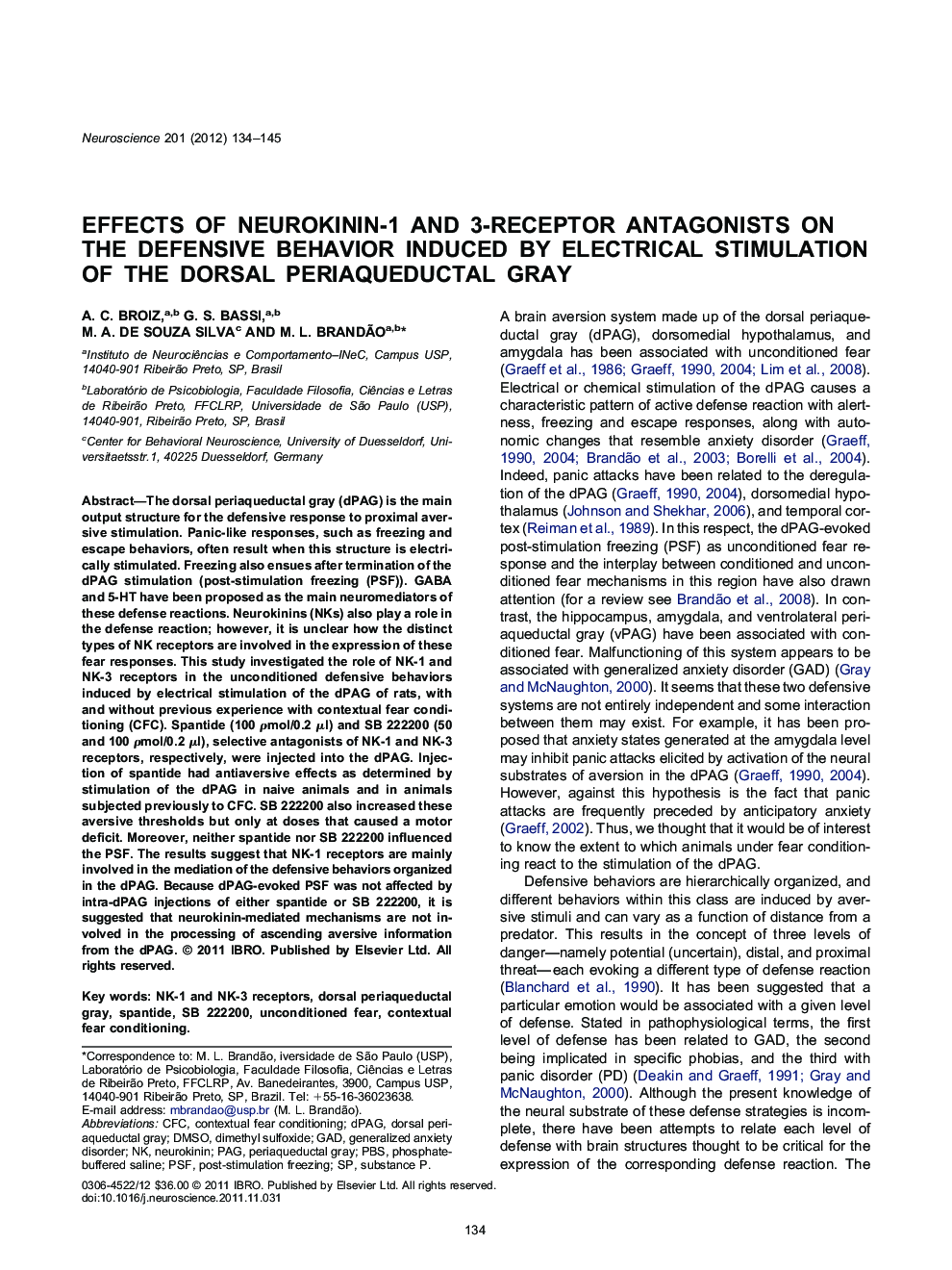| کد مقاله | کد نشریه | سال انتشار | مقاله انگلیسی | نسخه تمام متن |
|---|---|---|---|---|
| 4338549 | 1614875 | 2012 | 12 صفحه PDF | دانلود رایگان |

The dorsal periaqueductal gray (dPAG) is the main output structure for the defensive response to proximal aversive stimulation. Panic-like responses, such as freezing and escape behaviors, often result when this structure is electrically stimulated. Freezing also ensues after termination of the dPAG stimulation (post-stimulation freezing (PSF)). GABA and 5-HT have been proposed as the main neuromediators of these defense reactions. Neurokinins (NKs) also play a role in the defense reaction; however, it is unclear how the distinct types of NK receptors are involved in the expression of these fear responses. This study investigated the role of NK-1 and NK-3 receptors in the unconditioned defensive behaviors induced by electrical stimulation of the dPAG of rats, with and without previous experience with contextual fear conditioning (CFC). Spantide (100 ρmol/0.2 μl) and SB 222200 (50 and 100 ρmol/0.2 μl), selective antagonists of NK-1 and NK-3 receptors, respectively, were injected into the dPAG. Injection of spantide had antiaversive effects as determined by stimulation of the dPAG in naive animals and in animals subjected previously to CFC. SB 222200 also increased these aversive thresholds but only at doses that caused a motor deficit. Moreover, neither spantide nor SB 222200 influenced the PSF. The results suggest that NK-1 receptors are mainly involved in the mediation of the defensive behaviors organized in the dPAG. Because dPAG-evoked PSF was not affected by intra-dPAG injections of either spantide or SB 222200, it is suggested that neurokinin-mediated mechanisms are not involved in the processing of ascending aversive information from the dPAG.
▶The dPAG stimulation fear was challenged with local injections of NK antagonists. ▶The NK-1 antagonist spantide inhibited the fear reaction induced by dPAG stimulation. ▶The dPAG stimulation fear was unchanged by the NK-3 antagonist SB 222200. ▶The dPAG post-stimulation freezing was not affected by both NK antagonists. ▶NK-1, but not NK-3, receptors mediate the fear behaviors induced by dPAG stimulation.
Journal: Neuroscience - Volume 201, 10 January 2012, Pages 134–145